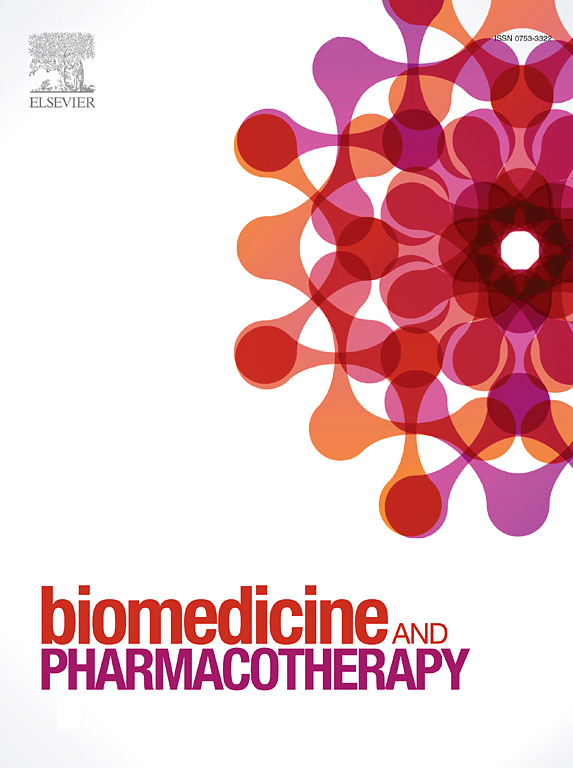Protective mechanism of Prim-O-glucosylcimifugin in the treatment of osteoarthritis: Based on lncRNA XIST regulation of Nav1.7
IF 6.9
2区 医学
Q1 MEDICINE, RESEARCH & EXPERIMENTAL
引用次数: 0
Abstract
LncRNA XIST and Nav1.7 have been identified to be significantly associated with the onset of osteoarthritis. Prim-O-glucosylcimifugin (POG) has antiinflammatory and analgesic effects in treating osteoarthritis (OA). However, its molecular mechanism of action remains unclear. This research investigated whether POG inhibits OA cartilage degeneration by regulating Nav1.7 through lncRNA XIST. We observed the relationship between lncRNA XIST and Nav1.7 through in vivo and in vitro experiments, and utilized lentiviral plasmids for XIST overexpression to further validate the protective effect of POG against OA. In vivo experiments revealed the close association of improving OA cartilage morphological changes by POG with lncRNA XIST and Nav1.7 downregulation and related proteins expression. In vitro experiments demonstrated significantly up-regulated lncRNA XIST and Nav1.7 expression in IL1β-induced chondrocytes, and their levels and related protein expression decreased after POG intervention. FISH indicated that POG attenuated the fluorescence intensity of lncRNA XIST in chondrocytes. RT-PCR and Western blot assays revealed the positive correlation of lncRNA XIST and Nav1.7 expression in chondrocytes. Additionally, flow cytometry results revealed that POG intervention reduced OA chondrocyte apoptosis. Therefore, we conclude that POG can mediate lncRNA XIST to regulate Nav1.7 to delay cartilage degeneration, which is an effective way to treat OA. However, lncRNA XIST is not the only target for regulation, and further discussion is needed.
Prim-O-glucosylcimifugin治疗骨关节炎的保护机制基于lncRNA XIST对Nav1.7的调控
已发现 LncRNA XIST 和 Nav1.7 与骨关节炎的发病密切相关。Prim-O-glucosylcimifugin(POG)在治疗骨关节炎(OA)方面具有抗炎和镇痛作用。然而,其分子作用机制仍不清楚。本研究探讨了POG是否通过lncRNA XIST调节Nav1.7来抑制OA软骨退化。我们通过体内和体外实验观察了lncRNA XIST与Nav1.7之间的关系,并利用慢病毒质粒过表达XIST进一步验证了POG对OA的保护作用。体内实验表明,POG改善OA软骨形态变化与lncRNA XIST和Nav1.7下调及相关蛋白表达密切相关。体外实验表明,在IL1β诱导的软骨细胞中,lncRNA XIST和Nav1.7的表达明显上调,POG干预后它们的水平和相关蛋白的表达下降。FISH表明,POG减弱了软骨细胞中lncRNA XIST的荧光强度。RT-PCR和Western印迹检测显示,lncRNA XIST与Nav1.7在软骨细胞中的表达呈正相关。此外,流式细胞术结果显示,POG 的干预减少了 OA 软骨细胞的凋亡。因此,我们得出结论,POG 可以介导 lncRNA XIST 调节 Nav1.7,从而延缓软骨退化,这是治疗 OA 的一种有效方法。然而,lncRNA XIST并不是唯一的调控靶点,还需要进一步探讨。
本文章由计算机程序翻译,如有差异,请以英文原文为准。
求助全文
约1分钟内获得全文
求助全文
来源期刊
CiteScore
11.90
自引率
2.70%
发文量
1621
审稿时长
48 days
期刊介绍:
Biomedicine & Pharmacotherapy stands as a multidisciplinary journal, presenting a spectrum of original research reports, reviews, and communications in the realms of clinical and basic medicine, as well as pharmacology. The journal spans various fields, including Cancer, Nutriceutics, Neurodegenerative, Cardiac, and Infectious Diseases.

 求助内容:
求助内容: 应助结果提醒方式:
应助结果提醒方式:


